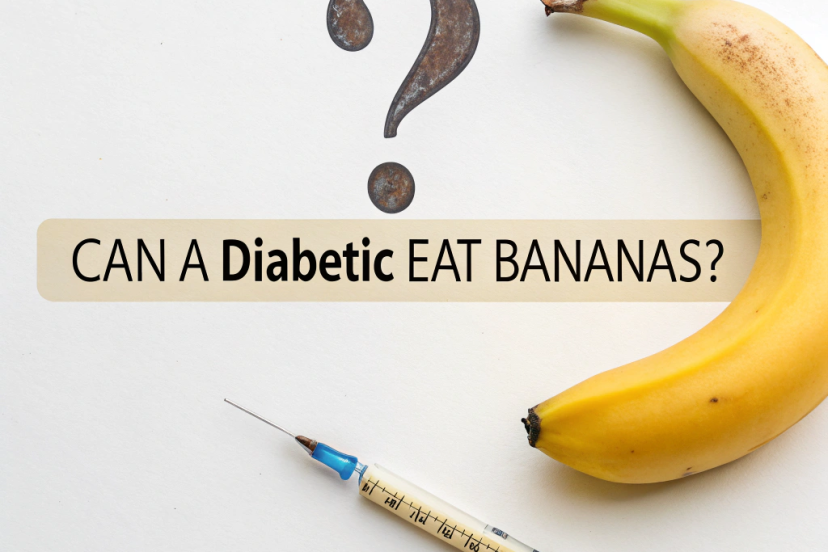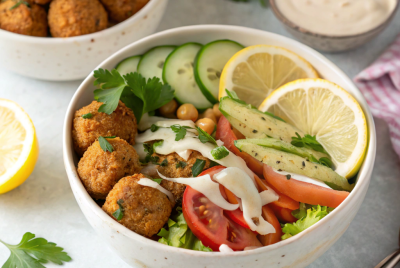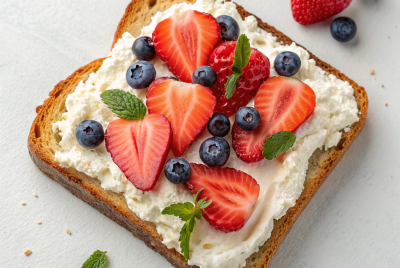Are Bananas Good for Diabetics? A Complete Guide
When I was first diagnosed with prediabetes, one of my biggest concerns was whether I’d have to give up my favorite fruits. I remember standing in my kitchen, holding a banana, wondering if this simple pleasure would become a thing of the past. After months of research, consultations with my dietitian, and careful blood sugar monitoring, I discovered something surprising: bananas aren’t the enemy. In fact, when eaten correctly, they can be part of a healthy diabetic diet. Let me share what I’ve learned about whether bananas are good for diabetics.
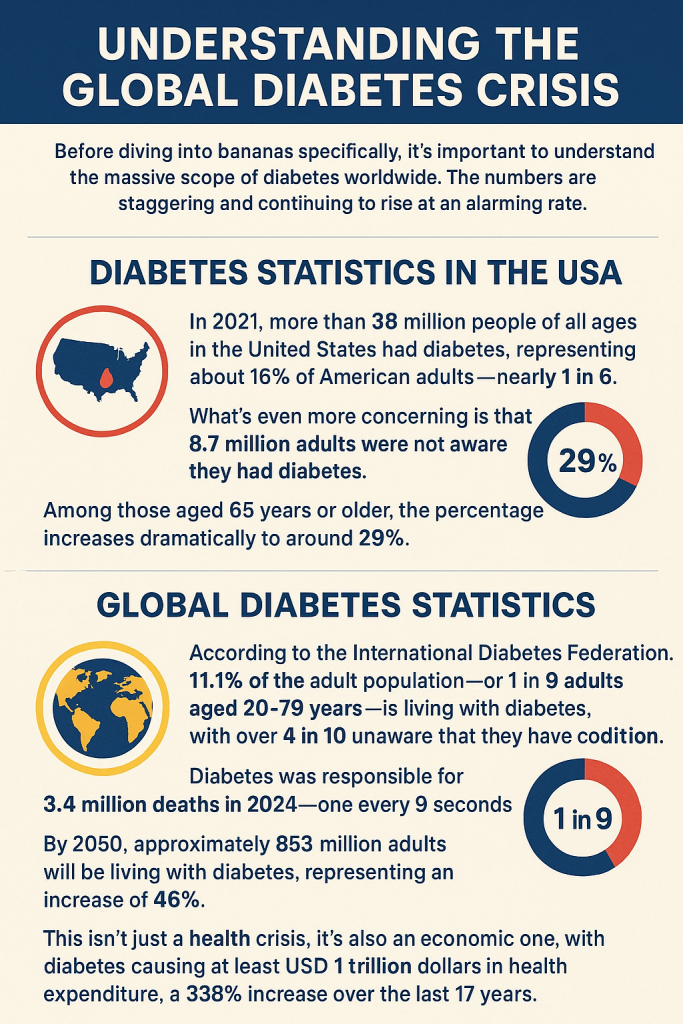
Why Diet Matters So Much for Diabetics
I can’t stress this enough: diet is absolutely crucial when managing diabetes. When you have diabetes, your body either doesn’t produce enough insulin or doesn’t use it effectively. This means that every single thing you eat directly impacts your blood sugar levels.
The Critical Role of Food Choices
Think of your body as a finely tuned machine. When you eat carbohydrates—whether from bread, rice, or fruit—your body breaks them down into glucose (sugar). In a healthy person, insulin helps move this glucose from the bloodstream into cells for energy. But when you have diabetes, this process is disrupted, causing blood sugar to remain elevated.
This is why monitoring carbohydrate intake is so important. Unlike medications that we take and forget about, food choices are decisions we make multiple times every day. Each meal is an opportunity to either help or hinder our blood sugar management.
The Fruit Dilemma for Diabetics
Many people with diabetes worry about eating fruit because it contains natural sugars. I remember my own confusion when I first heard conflicting advice: “Fruit is healthy!” versus “Avoid sugar!” So which is it? The truth lies somewhere in between, and understanding this balance is key to enjoying fruits like bananas while managing diabetes effectively.
Are Bananas Good for Diabetics? The Answer Might Surprise You
Here’s the short answer: Yes, bananas can be good for diabetics when consumed mindfully and in moderation. But let me explain why this answer is more nuanced than a simple yes or no.
The Nutritional Powerhouse in Yellow Packaging
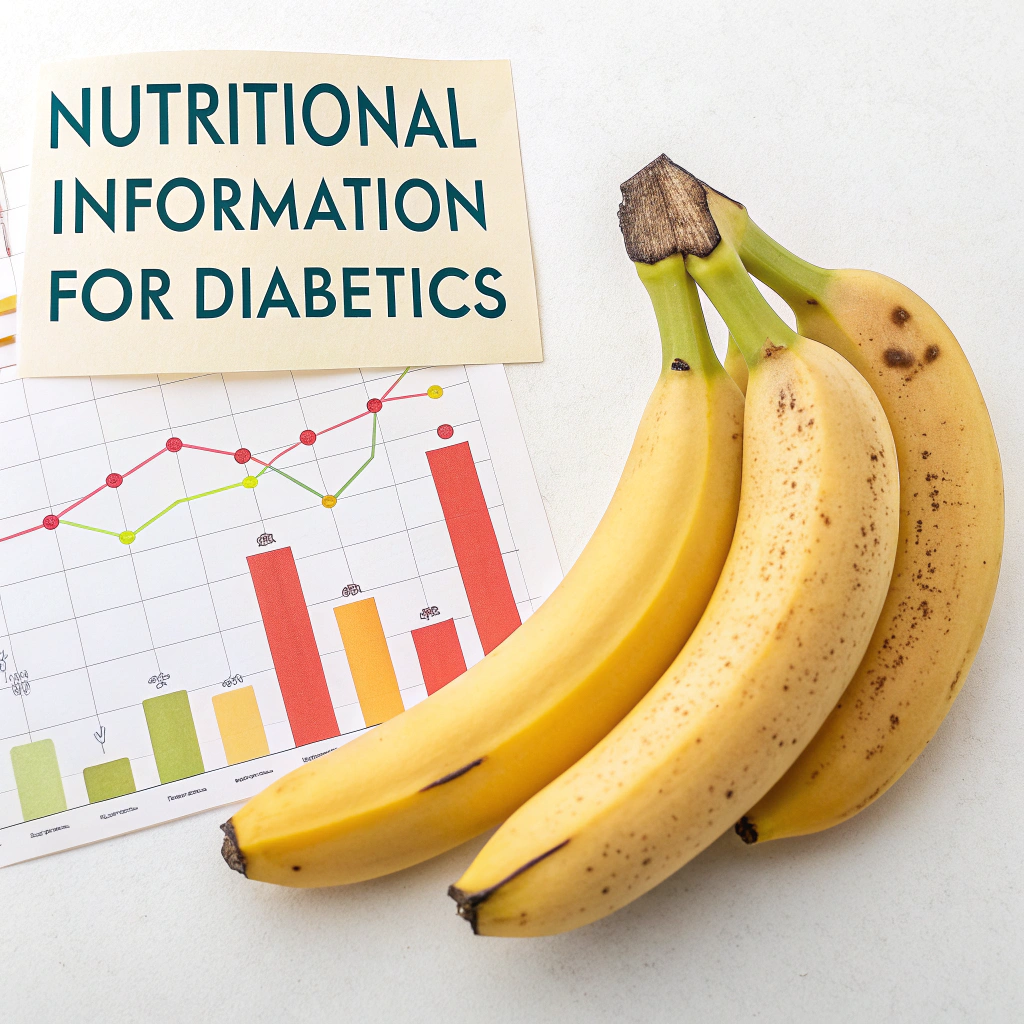
Bananas aren’t just sugar wrapped in a peel—they’re nutritional powerhouses. One medium ripe banana provides about 110 calories, 0 gram fat, 1 gram protein, 28 grams carbohydrate, 15 grams sugar (naturally occurring), 3 grams fiber, and 450 mg potassium.
Let me break down why these nutrients matter for diabetics:
Fiber: The 3 grams of fiber in a medium banana is particularly important. Fiber slows down digestion and the absorption of carbohydrates, which helps prevent those dreaded blood sugar spikes. Think of fiber as a speed bump that slows down how quickly sugar enters your bloodstream.
Potassium: With 450 mg per banana, this mineral is crucial for diabetics because we often face higher risks of cardiovascular issues. Potassium helps regulate blood pressure—a common concern for people with diabetes.
Vitamins: Bananas provide vitamin C for immune function and vitamin B6, which helps convert food into energy and supports healthy brain function.
Understanding the Glycemic Index: Are Bananas Good for Diabetics?
One of the most important tools I learned about in managing my blood sugar is the glycemic index (GI). This scale measures how quickly foods raise blood sugar levels, with lower numbers being better for diabetics.
Where Bananas Rank
Here’s the good news: According to the International Glycemic Index Database, ripe bananas have a low GI of 51, with slightly under-ripe bananas even lower at 42. Foods with a GI of 55 or less are considered low, meaning they cause a gradual rise in blood sugar rather than a rapid spike.
Bananas have a relatively low glycemic index of around 42 to 51, depending on their ripeness. This is actually comparable to or better than many other fruits and significantly better than processed foods like white bread or sugary snacks.
Glycemic Load Matters Too
While the glycemic index tells us how quickly a food raises blood sugar, the glycemic load (GL) considers both the quality and quantity of carbohydrates. Bananas have a moderate GL of 13, which means that while they do contain carbs, the overall impact on blood sugar is manageable for most diabetics.
The Ripeness Factor: A Key Detail for Diabetics
Here’s something fascinating I discovered: not all bananas are created equal when it comes to blood sugar impact. The ripeness of your banana makes a significant difference.
Green vs. Yellow vs. Spotted
When bananas are green and unripe, they contain more resistant starch—a type of carbohydrate that your body doesn’t fully digest. The resistant starch in unripe bananas passes through your gut undigested and is fermented by bacteria in your large intestine to form butyrate, a short-chain fatty acid that appears to have beneficial effects on gut health.
As bananas ripen and turn yellow, then eventually develop brown spots, the resistant starch converts to simple sugars. This is why an overripe banana tastes much sweeter than a slightly green one—and why it will raise your blood sugar more quickly.
My recommendation: Choose bananas that are yellow but not overly spotted. If you can tolerate the slightly firmer texture, slightly underripe bananas with a bit of green are even better for blood sugar management.
How Many Bananas Can a Diabetic Eat in a Day?
This is the question I get asked most often: “How many bananas can I safely eat?” The answer depends on several individual factors, but I can give you some general guidelines based on expert recommendations.
The General Recommendation
For most people with diabetes, 1 small to medium banana per day is safe to include in a well-balanced diet. However, this isn’t a one-size-fits-all answer. Your personal tolerance can vary based on:
- Your type of diabetes (Type 1 or Type 2)
- Your current blood sugar control
- Your total daily carbohydrate intake
- Your activity level
- Other medications you’re taking
- Your overall health status
Portion Control is Key
I’ve learned that with bananas, size really does matter. A small banana (6-7 inches) has fewer carbs than a large banana (8-9 inches). Half a banana to one small banana per day is generally safe for most diabetics.
When I first started managing my blood sugar, I would eat half a banana with breakfast and save the other half for an afternoon snack. This helped me spread out my carbohydrate intake throughout the day, which is better for blood sugar stability than eating all your carbs at once.
For Non-Diabetics
For people without diabetes, there’s more flexibility. Most healthy adults can comfortably eat 1-2 bananas per day as part of a balanced diet without any concerns. The fiber and nutrients in bananas make them an excellent snack choice for the general population.
Health Benefits of Bananas for Diabetics
Despite concerns about sugar content, bananas offer numerous health benefits that are particularly valuable for people with diabetes.
Heart Health Protection
Bananas are an excellent source of potassium, a mineral that is crucial for maintaining heart health by helping regulate blood pressure and preventing the risk of heart disease. Since diabetics face a higher risk of cardiovascular complications, this benefit is particularly important.
Digestive Support
The fiber in bananas supports healthy digestion and helps you feel full longer. This can be helpful for weight management, which is often a key component of diabetes management. Plus, the resistant starch in less ripe bananas acts as a prebiotic, supporting the growth of beneficial gut bacteria.
Energy Without the Crash
Unlike processed sugary snacks that cause rapid blood sugar spikes followed by crashes, bananas provide the body with energy through their carbohydrate content, along with vitamin B6, which helps convert food into energy and supports healthy brain function.
Nutrient Density
Bananas pack a lot of nutrition into a relatively small calorie package. They provide vitamin C for immune support, vitamin B6 for metabolism, magnesium for muscle function, and copper for red blood cell production—all nutrients that support overall health in diabetics.
Smart Strategies: Making Bananas Work for Your Diabetes
Let me share the strategies that have worked for me and are recommended by diabetes experts. These tips can help you enjoy bananas while keeping your blood sugar stable.
Pair Bananas with Protein or Healthy Fats
This is probably the single most important tip I can give you. Never eat a banana alone—especially not on an empty stomach. Enjoy your bananas with other foods, such as nuts or plain Greek yogurt, to help slow the digestion and absorption of the sugar.
Here are my favorite banana pairings:
- Half a banana with a tablespoon of almond butter
- Sliced banana on Greek yogurt
- Banana with a handful of walnuts or pistachios
- Banana smoothie with protein powder and spinach
The protein and fat slow down digestion, which helps prevent blood sugar spikes and keeps you feeling full longer.
Timing Matters
Spread your fruit intake throughout the day to help reduce the glycemic load and keep your blood sugar levels stable. I prefer to eat my banana as a pre-workout snack or with breakfast rather than as a dessert after a large, carb-heavy meal.
Monitor Your Individual Response
Everyone’s body responds differently to foods. I strongly recommend testing your blood sugar before eating a banana and then again 1-2 hours after. This will show you exactly how bananas affect YOUR blood sugar. Some people might find they can handle a whole banana without issues, while others might need to stick to half.
Choose Less Ripe Bananas
As I mentioned earlier, avoid eating overly ripe bananas as they have a higher glycemic index. Those perfectly yellow bananas with just a hint of green are your best bet.
Other Fruits Good for Diabetics
While we’re focusing on bananas, it’s important to know what other fruits work well for diabetics. Variety is important for getting a wide range of nutrients.
Best Fruit Choices
Fruits lower in sugar include berries, kiwis, and clementines, with the American Diabetes Association recommending berries and citrus fruits in particular.
Berries: Strawberries, blueberries, raspberries, and blackberries are all excellent choices. They’re high in fiber, packed with antioxidants, and have a low glycemic index. Plus, they’re delicious!
Apples: With their high fiber content (especially when you eat the peel), apples are a great diabetic-friendly fruit. They have a moderate glycemic index and help slow sugar absorption.
Citrus Fruits: Oranges, grapefruits, and tangerines provide vitamin C and fiber. Just make sure to eat the whole fruit rather than drinking juice—the fiber makes a huge difference.
Cherries: With a low glycemic index, cherries are a sweet treat that won’t spike your blood sugar as dramatically as some other fruits.
Pears: Similar to apples, pears are high in fiber and have a low glycemic index when eaten with the skin.
Peaches and Apricots: These stone fruits have a relatively low glycemic load and provide vitamins A and C.
Fruits to Limit or Avoid as a Diabetic
Not all fruits are created equal when it comes to diabetes management. Some have higher sugar content or glycemic index values that can cause rapid blood sugar spikes.
High-Glycemic Fruits to Consume with Caution
Some fruits are high on the glycemic index with a number over 70, meaning they can cause a quick rise in blood sugar and should be limited or eaten in moderation, including watermelon.
Watermelon: While refreshing, watermelon has a high GI of 74. If you eat it, keep portions small and pair it with protein.
Pineapple: This tropical fruit contains about 16 grams of sugar per cup and has a relatively high glycemic index. Enjoy occasionally in small amounts.
Mangoes: These are delicious but high in natural sugars. Save them for special occasions and watch your portion size.
Grapes: While not forbidden, grapes are high in sugar and easy to overeat. If you have them, measure out a small portion rather than eating from the bunch.
Fruits Diabetics Should Definitely Avoid
Dried fruit and 100% fruit juice should be consumed cautiously, as the portion sizes are small and they may not be as filling as other choices. Only two tablespoons of dried fruit like raisins or dried cherries contains 15 grams of carbohydrate.
Dried Fruits: The dehydration process concentrates the sugars, making dried fruits very high in carbs per serving. Two tablespoons of raisins have as many carbs as a whole piece of fresh fruit!
Fruit Juice: Even 100% fruit juice lacks the fiber of whole fruit and can cause rapid blood sugar spikes. The serving size for juice is very small (⅓ to ½ cup), and most people pour much more than that.
Canned Fruit in Syrup: The added sugar makes these a poor choice. If you do buy canned fruit, look for versions packed in water or their own juice.
Practical Tips for Including Bananas in Your Diabetic Diet
Over 250 Yummy-in-Your-Tummy Diabetic-Friendly Recipes
Let me share some real-world tips that have made bananas work for me as someone managing prediabetes.
Breakfast Ideas
- Add half a sliced banana to steel-cut oatmeal with a sprinkle of cinnamon and walnuts
- Make a smoothie with half a banana, Greek yogurt, spinach, and protein powder
- Top whole-grain toast with peanut butter and banana slices
Snack Ideas
- Freeze banana slices and eat them as a cold treat with almond butter
- Make “banana nice cream” by blending frozen banana with a little milk
- Create banana and nut butter roll-ups using low-carb tortillas
What to Avoid
- Banana bread, muffins, or other baked goods (even “healthy” versions are often high in carbs)
- Overripe bananas with extensive brown spotting
- Eating bananas without any protein or fat
- Consuming more than one banana per day without monitoring blood sugar
Special Considerations and Warnings
While bananas are generally safe for diabetics, there are some situations where you need to be extra careful.
Kidney Function Matters
People with poor kidney function should be careful about consuming bananas, as elevated blood sugar can cause progressive kidney damage, and when kidneys aren’t fully functional, they can’t remove all the potassium from blood, resulting in hyperkalemia, which can cause serious heart problems.
Medication Interactions
If you’re taking potassium-sparing diuretics for high blood pressure, your doctor may advise limiting potassium intake, including from bananas. Always discuss dietary changes with your healthcare provider, especially if you’re on diabetes medications or insulin.
Individual Tolerance Varies
Some people’s blood sugar levels may be more sensitive to bananas than others. What works for me might not work for you. This is why monitoring your own response is so important.
The Bottom Line: Are Bananas Good for Diabetics?
After all this research and personal experience, here’s my conclusion: Yes, bananas can absolutely be good for diabetics when eaten thoughtfully. They’re not a “forbidden fruit” that you need to avoid entirely. Instead, think of them as a nutritious option that requires some planning and portion control.
According to the American Diabetes Association, incorporating fruits like bananas, which have a low to moderate glycemic index, can be beneficial for individuals with diabetes. The key is moderation, monitoring, and mindful eating.
Remember these key points:
- Choose bananas that aren’t overly ripe
- Stick to one small to medium banana per day
- Always pair bananas with protein or healthy fats
- Spread your fruit intake throughout the day
- Monitor your blood sugar to see how bananas affect YOU personally
- Consider less ripe bananas for better blood sugar control
Bananas offer valuable nutrients including potassium, fiber, and vitamins that support overall health—benefits that are particularly important for people with diabetes who face higher risks of heart disease and other complications. Don’t let fear of fruit rob you of these benefits. Instead, learn to incorporate bananas intelligently into your meal plan.
Conclusion
Living with diabetes doesn’t mean giving up the foods you love—it means learning to enjoy them in smarter ways. Bananas, with their convenience, affordability, and impressive nutritional profile, can definitely have a place in your diabetic diet. The key is understanding how they affect your blood sugar and making informed choices about when and how much to eat.
I hope this guide has answered your questions about whether bananas are good for diabetics. Remember, everyone’s body is different, so what works for someone else might not work exactly the same for you. Work with your healthcare team, monitor your blood sugar regularly, and don’t be afraid to experiment (safely) to find what works best for your body.
With the right approach, you can enjoy the sweet taste of a banana while keeping your blood sugar in check.
Further reads:
Smart Blood Sugar: Strategies to Balanced Glucose Levels
Potassium-Rich Foods: Banana vs Potato Showdown
Frequently Asked Questions
1. Can diabetics eat bananas every day?
Yes, most diabetics can eat a small to medium banana every day as part of a balanced diet. The key is portion control and pairing bananas with protein or healthy fats. However, individual tolerance varies, so monitor your blood sugar response and consult with your healthcare provider. If you notice blood sugar spikes, you may need to reduce frequency or portion size. Some people do better eating bananas 3-4 times per week rather than daily.
2. Are green bananas better than ripe bananas for diabetics?
Yes, green or slightly underripe bananas are generally better for diabetics because they contain more resistant starch, which doesn’t break down as quickly into sugar. As bananas ripen, the resistant starch converts to simple sugars, raising the glycemic index. While green bananas are better for blood sugar control, they can be harder and less sweet, so aim for bananas that are yellow with just a touch of green for the best balance of taste and blood sugar management.
3. What is the best time of day for a diabetic to eat a banana?
The best time to eat a banana is typically with a meal that contains protein and healthy fats, such as breakfast, or as a pre-workout snack. Avoid eating bananas on an empty stomach or as a standalone snack, as this can cause blood sugar spikes. Many people find that eating a banana 30-60 minutes before exercise works well, as physical activity helps metabolize the carbohydrates. Spreading fruit intake throughout the day rather than consuming multiple servings at once also helps maintain stable blood sugar levels.
4. Can Type 1 diabetics eat bananas?
Yes, Type 1 diabetics can eat bananas, but they need to be more careful about counting carbohydrates and adjusting insulin accordingly. A medium banana contains approximately 27-29 grams of carbohydrates, which needs to be factored into insulin calculations. Type 1 diabetics should monitor their blood sugar before and after eating bananas to understand their individual response and determine the appropriate insulin dosage. Working with a diabetes educator or endocrinologist can help establish the right approach for including bananas in your meal plan.
5. What fruits should diabetics completely avoid?
Diabetics don’t necessarily need to completely avoid any fruit, but they should be cautious with dried fruits, fruit juices, and canned fruits in syrup, as these lack fiber and contain concentrated sugars. High-glycemic fruits like watermelon, very ripe mangoes, and pineapple should be consumed in small portions and paired with protein. The most important thing is to avoid fruit juice and dried fruits, as these can cause rapid blood sugar spikes. Focus instead on whole, fresh fruits with their natural fiber intact, and always pay attention to portion sizes and your body’s individual response.

